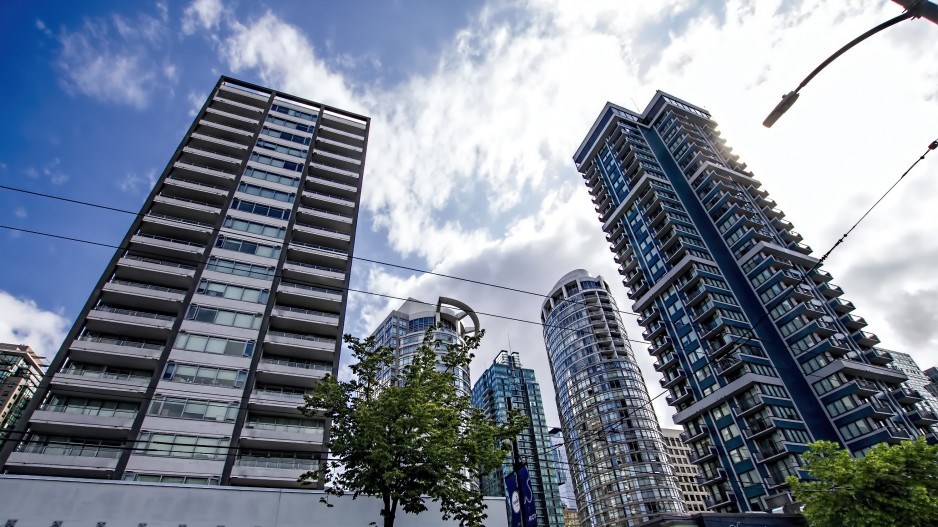The Bank of Canada got what it wanted, at least on the West Coast.
The Lower Mainland housing market cooled in July as further interest rate hikes pushed more buyers to the sideline, affordability further deteriorated and buyer confidence sank.
That said, the resale market remained active as those with existing rate guarantees locked in purchases while strong fundamentals of high immigration and a firm labour market supported demand.
MLS sales in the region spanning Metro Vancouver, Abbotsford-Mission and the Sea-to-Sky region sank to 3,765 units in July. This marked a steeper-than-normal monthly decline of 22 per cent from June (compared to a typical June-to-July drop of 10 per cent), highlighting a pullback in activity. On a year-over-year basis, sales growth remained in line with June at 32 per cent, but this owed to the base effect of declining sales last year. Compared to the same month average from 2010 to 2019, sales were down 11 per cent. Fraser Valley markets drove the latest decline after a strong June pick up, reflecting greater sensitivity to affordability erosion.
Price patterns were mixed in July as average prices fell both on an unadjusted and seasonally adjusted basis by 2.5 to three per cent. The unadjusted average price slipped to $1.177 million, which was a second straight monthly decline. This was 3.6 per cent higher than a year ago and – while 12 per cent off peak – this was 27 per cent higher than pre-pandemic levels. In contrast, the constant-quality benchmark value continued to rise, but at a decelerated rate of 0.7 per cent. This could point to some compositional drivers in the average price, but the trend is expected to be negative in coming months. The latest benchmark values point to a stronger pick up in detached home prices (1.1 per cent), while townhome and apartment prices rose less than 0.6 per cent.
That said, this is unlikely to trigger a material price decline given the tight supply conditions. New listings fell more than normal for July (down 14 per cent month to month), albeit the trend is rising. Prospective sellers have retreated from the market as sales slow. Fewer sales have contributed to rising resale inventory (active listings) but levels remain tight and six per cent lower than last year’s already-low levels. The sales-to-active-listings ratio remained firmly in a sellers’ market.
The latest round of interest rate hikes points to sluggish conditions into the fall months. Buyers will wait on the sidelines for prices or interest rates to decline for an entry point. That said, any downshift in price will likely be met by willing buyers given a lack of inventory, tight rental market and strong population growth.
Like the national picture, B.C.’s labour market was relatively unchanged in July as seasonally adjusted employment nudged down 0.1 per cent (1,600 people). Given this, employment growth in the province continues to slow. Total employment grew 0.8 per cent year over year in July, the smallest increase in over three years. It is above pre-pandemic February 2020 by 4.1 per cent. The labour participation rate declined from June’s 65.2 per cent to 64.8 per cent, while the provincial unemployment rate fell to 5.4 per cent, following June’s high of 5.6 per cent. This is likely due to a labour force contraction of 0.3 per cent.
Full-time hiring in B.C. was up 0.2 per cent or by 4,100 people for the third consecutive month, while part-time employment declined further by 5,700 people (down one per cent). The Vancouver census metropolitan area recorded a 0.2-per-cent increase in employment from the previous month, while the unemployment rate was up to 5.5 per cent from 5.4 per cent in June.
Goods-producing industries saw total employment fall by 4.7 per cent in July with the most-pronounced reduction being in the construction industry – where employment declined 8.9 per cent month over month.
Although B.C.’s labour force remains supported by a growing population, businesses and households continue to feel the pinch of the cumulative interest rate hike. Nationally, the jobless rate ticked higher in July. With a further slowdown in the economy expected, the unemployment rate is likely to rise further in coming months.•
Bryan Yu is chief economist at Central 1.




